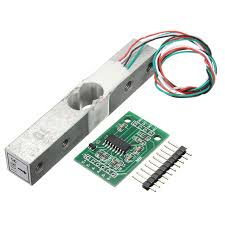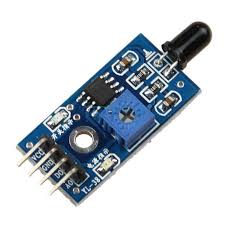Wind Sensor Rev. C
17.00 د.ك
The Wind Sensor Rev. C is a low-cost anemometer with an analog output
In stock
Description
The Wind Sensor Rev. C is a low-cost anemometer with an analog output, designed for use with electronic projects. It is a thermal anemometer based on a traditional method for measuring wind speed called “hot-wire”. This technique involves heating an element to a constant temperature and then measuring the electrical power that is required to maintain the heated element at temperature as the wind changes. The wind velocity is proportional the heat (i.e. power) applied to the sensor.
The hot wire technique excels at low to medium wind speed, and is the preferred technique for sensing indoor air movement, where the spinning cup anemometers typically seen on weather stations are ineffective. As an experimenters tool, the sensor is exquisitely sensitive, with a small puff of air being sensed at a distance of 18-24″.
Possible applications include human breath detection, room occupancy detection, HVAC system monitoring, weather stations and many more.
It has five pins, three signal pins plus power and ground. Below is a chart of the pins functions. The latest version of the sensor, with a more accurate op amp, runs fine between four and five volts, but it will not work at higher voltages. The Arduino calibration sketch (link below) is premised on a regulated five volt supply, so the sketch won’t work accurately at other voltages.
If higher levels of precision and stability are required, take a look at the Wind Sensor Rev. P.
Specifications
- Dimensions: .68″ × 1.590″ × .25″
- Supply Voltage: 4 – 5 volts (4-10 volts previously)
- Supply current: 20 – 40 mA (depending on wind speed)
- Output signal: analog, 0 to VCC
- Useful wind velocities 0-60 mph
Technical Notes
The sensor can be switched off to save power, but at start-up needs to be allowed to warm up about 10 seconds to thermally stabilize for best accuracy. This time interval allows the sensing thermistor to heat up to operating temperature. It’s probably also not a good idea to hang the sensor power supply off a microcontroller pin, even an Atmel pin, if best accuracy is a concern, as the sensor draws a bit of current (~25 mA) and the current will also fluctuate with wind speed. The Wind Sensor includes a small trimpot that is used to calibrate the sensor for zero wind. Calibration is simple. Simply put a glass over the sensor to block any breeze and adjust the pot for the desired zero level. We calibrate the sensors roughly for .5V of output at zero wind with a six volt supply, but you are free to calibrate as desired. A lower calibration point, say .2 V will result in a little more sensing capability at the high end. Using a higher voltage supply will require recalibration. Do not use supplies higher than about 10 volts. A regulated supply is highly recommended.
Pinout
| GND | Ground |
| +V | Power 5 volts regulated voltage for best results |
| Out | Output voltage. This is the voltage at RV multiplied by about three and shifted by the setting on the potentiometer. This output voltage will saturate (hit Ground or +V) if the ambient temperature changes much from the temperature when the sensor was calibrated. The sensitivity of this output can be changed by by swapping out R11. Higher sensitivity will make the sensor saturate more easily with ambient temperature change. |
| RV | This is the raw loop voltage and the output to use for calibrated output. it will not saturate. It won’t go below about 1.8 volts at room temperature either. This voltage is not affected by the calibration potentiometer. The output of the sensor is logarithmic, which means the sensor can capture very slight air movements at the low end, but also not saturate at full output until the air-flow reaches about 60 miles per hour. The Arduino sketch for use with the wind sensor is constructed to use this pin as output. |
| TMP | A temperature output. This is just a voltage divider resistor and thermistor. It will read about 2.8 volts at room temperature and go down with higher temperatures and up with lower temperatures. It will never saturate. An algorithm to translate voltage into temperature is included in the example sketch below. |
Additional Resources






